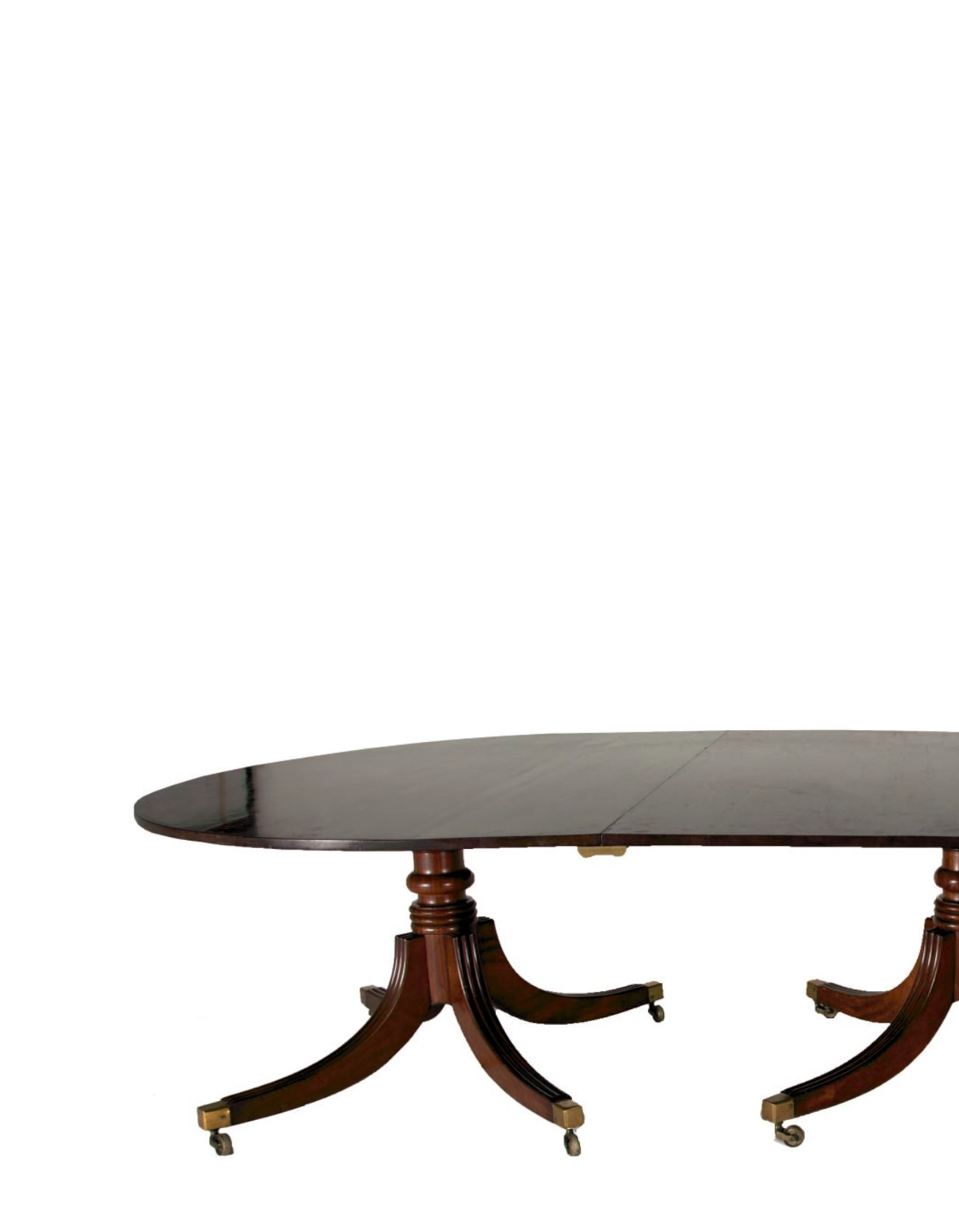
 170 A FINE IRISH REGENCY MAHOGANY THREE PILLAR DINING TABLE,
170 A FINE IRISH REGENCY MAHOGANY THREE PILLAR DINING TABLE,
atributed to Morgan of Dublin, the D-end top, raised on three ring turned column supports
with outstepped fluted downswept quadruped legs with brass toe caps and castors.
160cm wide x 387cm long
€ 30,000 - 40,000
Robert Morgan is listed in the directories in the years 1782 to 1789 as an upholder and cabinetmaker at
16 Henry Street and from 1790-1807 at 21 Henry Street. He was made a Freeman of the City of Dublin as a
joiner by service, in 1779. A mahogany rectangular dining table dating from the 1790s and stamped ‘Mor-
gan’ survives, with the top having a reeded rim above four pillar supports and reeded scroll quadruped
base, the splayed legs with brass caps and castors. In 1805, Robert Morgan offered ‘his sincere thanks to
his numerous Friends, the Nobility and the Public, for their Kind particularity to him for nearly thirty years’.
He highlighted the fact that he had ‘very considerably improved his Ware-Rooms, and also the communi-
cations thereto by a gallery; and has now ready for sale a variety of furniture which on inspection will be
found equal to any in Europe’. From the 1820’s, after Robert Morgan’s death the business was managed by
his two sons Anthony and Louis and became one of the most important firms in the trade.
The Morgan firm supplied escritoires to Borris House, Co. Carlow which bear a four number stamp and a
dining table, circa 1825, sold at Christies was numbered 5174. The firm, as mentioned, also supplied the
‘set of Trafalgar Dining Tables consisting of seven mahogany tops and strong frames on turned and roped
legs and patent castors’ to the Provost House, Trinity College, Dublin for the visit of George IV.
Dr. Angela Alexander 2015
NOTE FOR ILLUSTRATION. THE TABLE IS PHOTOGRAPHED WITHOUT THE TWO LEAVES
WHICH ACCOMPANY IT



















